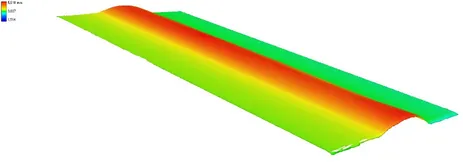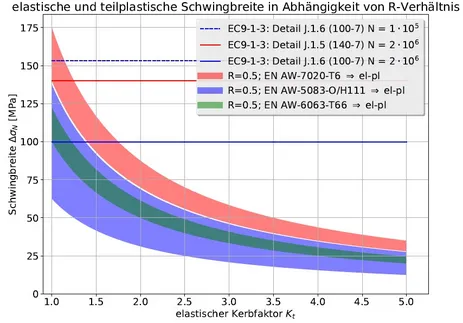Re-evaluation and supplementation of the test data for DIN EN 1999-1-3 with focus on the low cycle fatigue range
- IGF 18629 / N1
- Project period: 2015-2017
Fatigue-loaded, unwelded/ welded aluminum structures are widely used in lightweight construction and are designed in accordance with DIN EN 1999-1-3. In the low cycle fatigue range, loads are permitted that lead to plasticization in the load-bearing components. The current, stress-based EN verification corresponds to an extrapolation rule for detail categories from the finite life fatigue range. A purely elastic stress state is assumed, whereby the alloy influence is not taken into account. As a result, the EN verification introduces model deviations due to strain-dependent processes, material strengths and system constraints, leading to uncertain results. There is a lack of strain-based verifications that are authoritative for short-term design in terms of stress type and magnitude. Affected structures are for example (temporary) bridges, (flood/noise) protection walls, special structures, container structures, cranes. The aim of the research project is to develop an extended detailed catalog that covers the influence of plasticizing notches. In addition, the transition from quasi-static ultimate limit state to N>105 vibrations will be defined and integrated into the model and calculation approaches of DIN EN 1990 with partial safety factor concept. For this purpose, static and cyclic material properties of un/welded small specimens are determined, and notches in welds are recorded non-destructively by laser scanner. In addition, stress-controlled tests are carried out on components. The alloys used are EN AW-5083 O/H111, EN AW-6063 T66 and EN AW-7020 T6.

